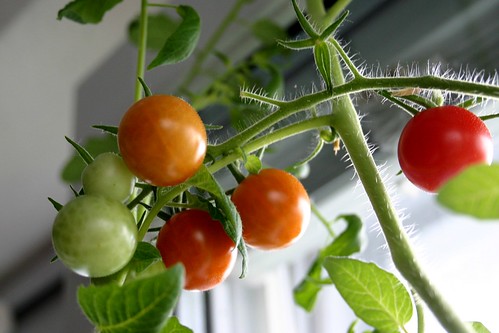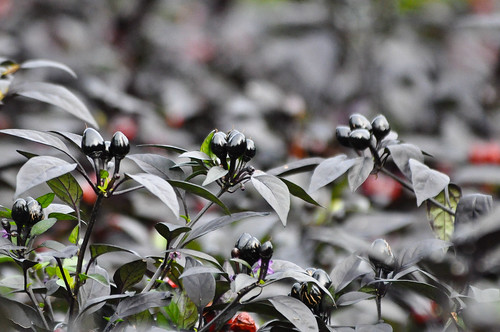
TheGardenLady received this question from Daniel:
I would like to grow a food plant of some sort in my dorm room. I was wondering what kind of plant you would suggest. I don’t have a lot of time or gardening skill, so an easy to care for plant would be ideal. Also, our room has a window, but does not get direct sunlight. It stays around room temperature year round. Finally, it would be nice to be able to harvest something before the year is over. I don’t know if anything fits the bill, but suggestions would be great!
Wouldn’t it be wonderful if we could grow our own food in our home or dorm room? I think most of us would convert a floor to a garden just to have fresh produce year round. I know that I would create a garden in my lower level which has lots of windows that are on the West and North sides of the building so they get no sunshine. And to have harvest fresh vegetables at the end of the year, for Christmas dinner, would be a gourmet’s delight. But alas, this dream has not quite been realized in my lifetime. Many of the Dick Tracy comic book inventions have come true (Dick Tracy, a popular comic strip in the 1940’s and 1950’s) and I imagine that some day growing vegetables or food easily in a dorm room will also come true. But today one really needs a green house to have success. Food plants want lots of SUN to produce food- usually at least 6 hours of sun. That is how nature created them. People who have a glass or plastic greenhouse can attempt to raise food indoors. But without that sunlight indoors, you are asking for difficulties.
I am not sure what temperature you say your dorm room is when you say “it stays around room temperature year round.” People regulate the amount of heat in their rooms and it can usually be from approximately 68 degrees to 78 degrees in the rooms. Some plants like it warmer that is why they grow in the hot summer though plants like lettuce prefer a cooler environment. And also, because a plant is in a pot, you will have to be sure that you water the plants enough. Some plants might even need humidity around them as well as to be watered. To get added humidity, put the pot in a tray with water and stones. Site the pot above the water, on the stones not in the water. In many cases the plants will need a pollinator to produce fruit. People do help pollinate when insects aren’t available to do it.
But you can try to raise plants to produce a tiny harvest. Just be prepared for failure and don’t get upset if your plants just won’t or don’t produce. Expect a smaller harvest if you grow your plants indoors. You will surely get the green leaves on your plants even if you don’t get produce. The green leaves of a sweet potato vine is decorative even if you don’t harvest sweet potatoes.
Since you don’t have sunlight, consider buying grow lites. Artificial light is often crucial for raising plants indoors. Reading about the best choices for lighting fixtures for the produce you want to grow is necessary (see here). Some small growing lights that are relatively inexpensive are the Aero garden lights that I saw in my local Ace Hardware store (see here).
It is best not to use soil from the garden when growing produce plants indoors. Lighter soils are best. A good recipe for making soil for indoor use is here.
Consider growing herbs. (See my previous post on this topic)Â Because herbs can be used before going into flower or producing seeds, they are easiest to grow indoors.

Or try finding a pepper plant to bring into your room. This is the season that nurseries are selling the colorful plants as indoor ornamental plants. (See my previous post on this topic) But be careful since many of the pepper plants have inedible peppers. Always ask if the pepper plant you are buying is safe and good to eat. Don’t buy them if the salesperson doesn’t know the answer. If you are lucky enough to find the pepper plants that have already been started, you will enjoy the plant and can harvest the peppers for a dish you might want to cook. However to be absolutely sure that you have edible pepper plants you might consider buying packages of pepper seeds (see here) to start from scratch.

Two edible pepper plants you might want to try are Black Pearl known for its robustness and resistance to insects and fungi as well as its being drought resistant and Tangerine Dream, a sweet edible ornamental pepper that has small orange banana shaped fruit. Or you might also start your own seeds from hot peppers you may have left rotting in your house. See here.
Another plant to try indoors is the radish plant (see here).
There is a list of vegetable plants you can try indoors.  See here.  Good luck and let us know if you have success. If you have success and need a recipe, TheGardenLady can send you some.
